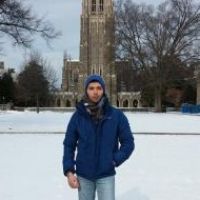Porporato et al., 2016
Propagation of hydroclimatic variability through the critical zone
Porporato, A.M., S. Calabrese, and A. Parolari (2016)
American Geophysical Union 2016 Fall Meeting, San Francisco, CA
-
Calhoun, INVESTIGATOR
-
Calhoun, INVESTIGATOR
-
Calhoun, INVESTIGATOR
Abstract
The interaction between soil moisture dynamics and mineral-weathering reactions (e.g., ion exchange, precipitation-dissolution) affects the availability of nutrients to plants, composition of soils, soil acidification, as well as CO2 sequestration. Across the critical zone (CZ), this interaction is responsible for propagating hydroclimatic fluctuations to deeper soil layers, controlling weathering rates via leaching events which intermittently alter the alkalinity levels. In this contribution, we analyze these dynamics using a stochastic modeling approach based on spatially lumped description of soil hydrology and chemical weathering reactions forced by multi-scale temporal hydrologic variability. We quantify the role of soil moisture dynamics in filtering the rainfall fluctuations through its impacts on soil water chemistry, described by a system of ordinary differential equations (and algebraic equations, for the equilibrium reactions), driving the evolution of alkalinity, pH, the chemical species of the soil solution, and the mineral-weathering rate. A probabilistic description of the evolution of the critical zone is thus obtained, allowing us to describe the CZ response to long-term climate fluctuations, ecosystem and land-use conditions, in terms of key variables groups. The model is applied to the weathering rate of albite in the Calhoun CZ observatory and then extended to explore similarities and differences across other CZs. Typical time scales of response and degrees of sensitivities of CZ to hydroclimatic fluctuations and human forcing are also explored.
Citation
Porporato, A.M., S. Calabrese, and A. Parolari (2016): Propagation of hydroclimatic variability through the critical zone. American Geophysical Union 2016 Fall Meeting, San Francisco, CA.
 This Paper/Book acknowledges NSF CZO grant support.
This Paper/Book acknowledges NSF CZO grant support.
Explore Further



